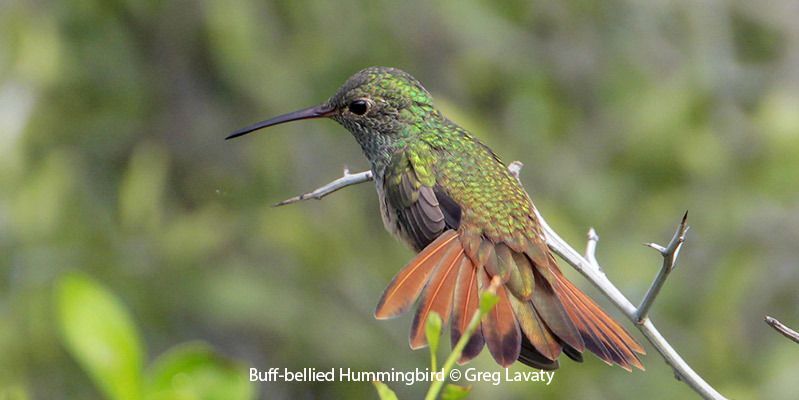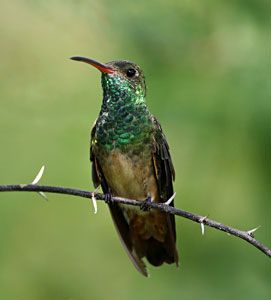
© David McDonald
Buff-bellied Hummingbird
Amazilia yucatanensis
Family: (Trochilidae) Hummingbirds
Preferred Habitat: Gardens, anywhere suitable flowers are found.
Seasonal Occurrence: Rare in winter.
Notes by Susan Billetdeaux: The Buff-bellied Hummingbird is a Mexican species that has traditionally have been a south Texas specialty, but appears to be increasing its range northward. They are rare but regular winter visitors to the Upper Texas Coast. Every year there are scattered reports of them visiting feeders. There have been recent reports for High Island, Lake Jackson and within the Houston city limits. Males and females are very similar, but for the female the upper part of the bill is darker and the green throat is somewhat less iridescent. The red bill is unique among American hummingbirds. The Cornell Lab of Ornithology reports that this species is also unique in dispersing to the north from its breeding areas in south Texas.
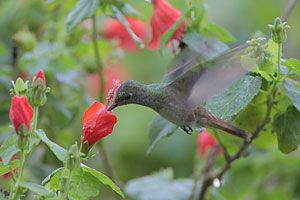
© Greg Lavaty
Profile by Aidan Healey: Like most hummingbirds, the Buff-bellied Hummingbird is primarily green, especially around the head and back. It has a rufous-colored tail and a buffy wash to its light underside, and its bill is distinctively reddish or orangey-red with a black tip. Weighing just under 5 grams (about as much as two sugar cubes), the Buff-bellied Hummingbird is actually one of the largest hummingbirds to visit the Houston area. It can be found and identified by its high-pitched twittering call, which it is known to give year-round, both while perched and in flight.
The Buff-bellied Hummingbird is commonly found in oak woodlands and brushy areas, but it also is a regular visitor to urban parks and gardens. While it has been known to breed in southern Texas, the Buff-bellied Hummingbird is unique among North American hummingbirds in that it disperses northward along the Gulf coast during the winter – during the non-breeding season, you may even see a Buff-bellied Hummingbird visiting your feeder! While nectar or sugar-water can provide the energy these birds need, they will also feed on mosquitoes and other insects, which they often catch in mid-air.
Profile by Theresa Kelly: Hummingbird identification can be notoriously difficult, largely due to their small size and plumage similarities between different species. The Buff-bellied Hummingbird is no exception, though adults possess several characteristics that set them apart from their Trochilid kin. With green on the head and back, a sandy belly, an iridescent blue-green throat, and a rufous tail, the Buff-Bellied is a riotous mix of color. A bright red bill with a dark tip helps distinguish adult Buff-bellied from similar hummingbirds, although juveniles’ bills are often darker and less distinct. Juveniles are also duller overall, with a more grayish breast. Compared to other US hummingbirds, the Buff-bellied is fairly large and possesses a moderately long bill, tail, and wings. Their most frequent calls are a dry tik common to hummingbirds and sharper, higher tsi-we or siik calls which are often made during display flights.
Buff-bellied Hummingbirds live in lowland habitats, preferring shrubby and wooded areas such as woodland edges, scrubby fields, parks, and even suburban or urban gardens given sufficient presence of flowering plants. Although hummingbirds are known for feeding on flower nectar, they often get the majority of their nutrients from insects. They can use their long, thin beaks to hover over and pluck up small insects such as flies and caterpillars, or they may hunt insects on the wing (a behavior known as flycatching). Similar to a butterfly’s proboscis, a long, transparent tongue helps the Buff-bellied Hummingbird consume nectar from various plant species, including tropical sage, aloe vera, papaya, and shrimp plant. Aggressive around food sources, Buff-bellied Hummingbirds will often chase smaller hummingbirds away with loud see-see-see-see calls, although it is unclear whether this behavior is associated with either sex or related to nesting territoriality. Despite their diurnal habits, Buff-bellied Hummingbirds have been known to feed at night.
Largely residential, Buff-bellied Hummingbirds may migrate short distances. Some move south from Texas to Mexico in the wintertime, while others may move northward to winter along the central Gulf Coast. A relatively rare visitor to the Houston area, Buff-bellied Hummingbirds have been found in local counties sporadically: most recently, an individual was seen this past December 2024 near the High Island field station (shout out to Nick Minnich!). Feeders are always a good way to attract hummingbirds, but strategic gardening can allow you to provide food and shelter for Buff-bellied Hummingbirds in particular. Turkscap, Anacua, and Coral Bean (Erythrina herbacea) are preferred food sources that will brighten up your yard, while Texas ebony, hackberry, willow, and ash are native nesting favorites.
-
Cornell Lab of Ornithology
-
Bird Guide
-
Bird Library
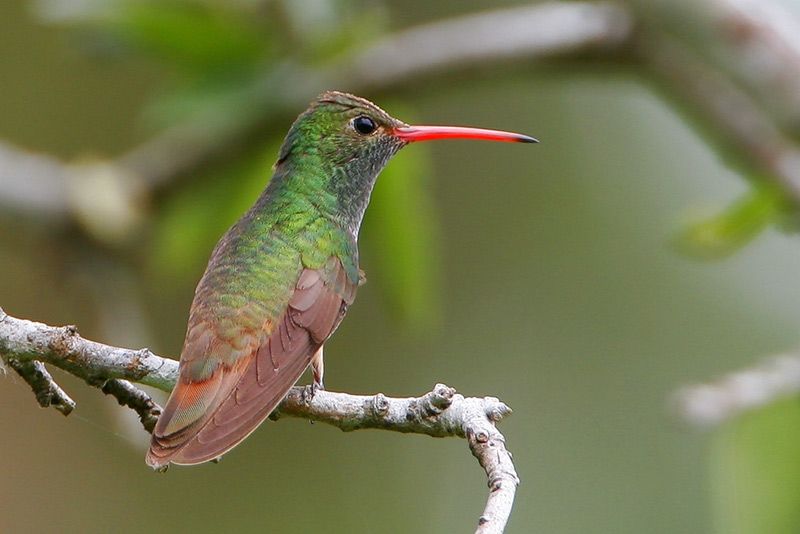
© Greg Lavaty, www.texastargetbirds.com
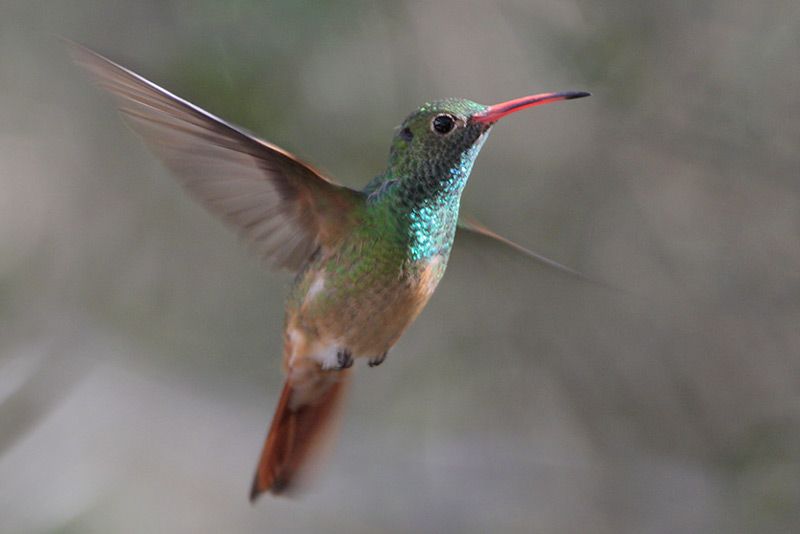
© Greg Lavaty, www.texastargetbirds.com
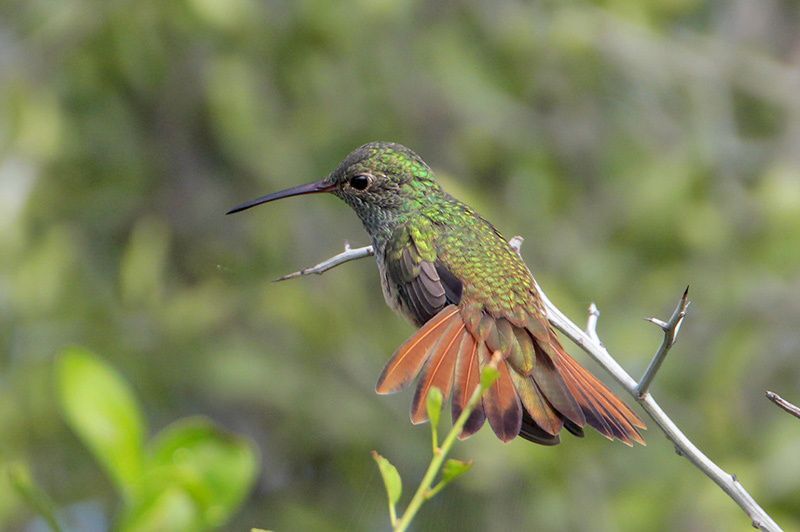
© Greg Lavaty, www.texastargetbirds.com
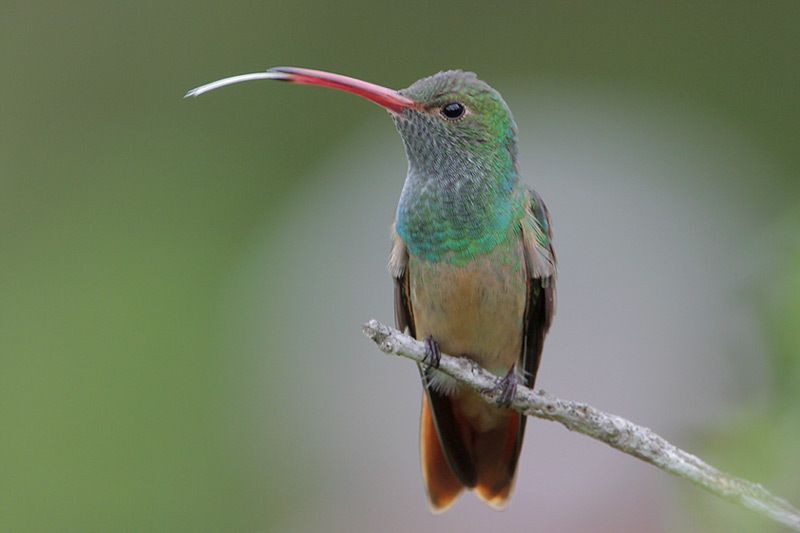
© Greg Lavaty, www.texastargetbirds.com
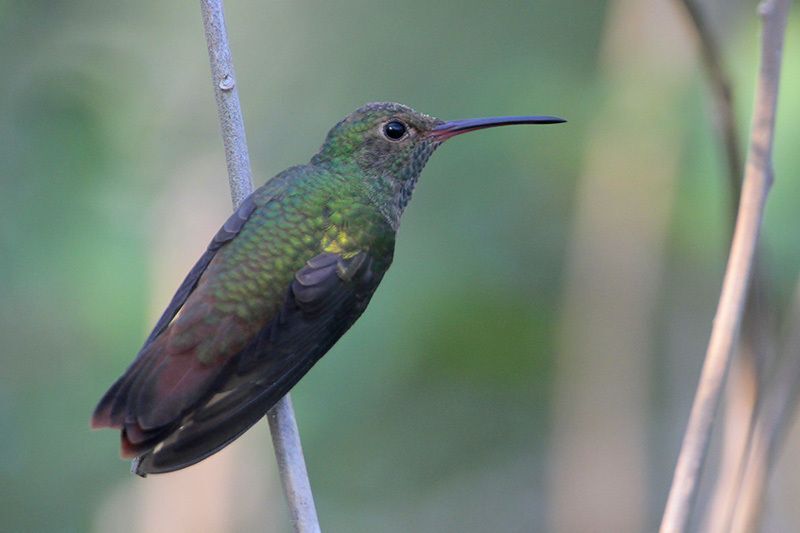
© Greg Lavaty, www.texastargetbirds.com
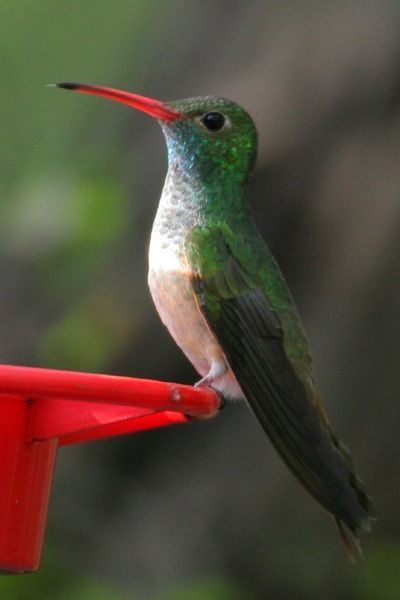
© Greg Lavaty, www.texastargetbirds.com

